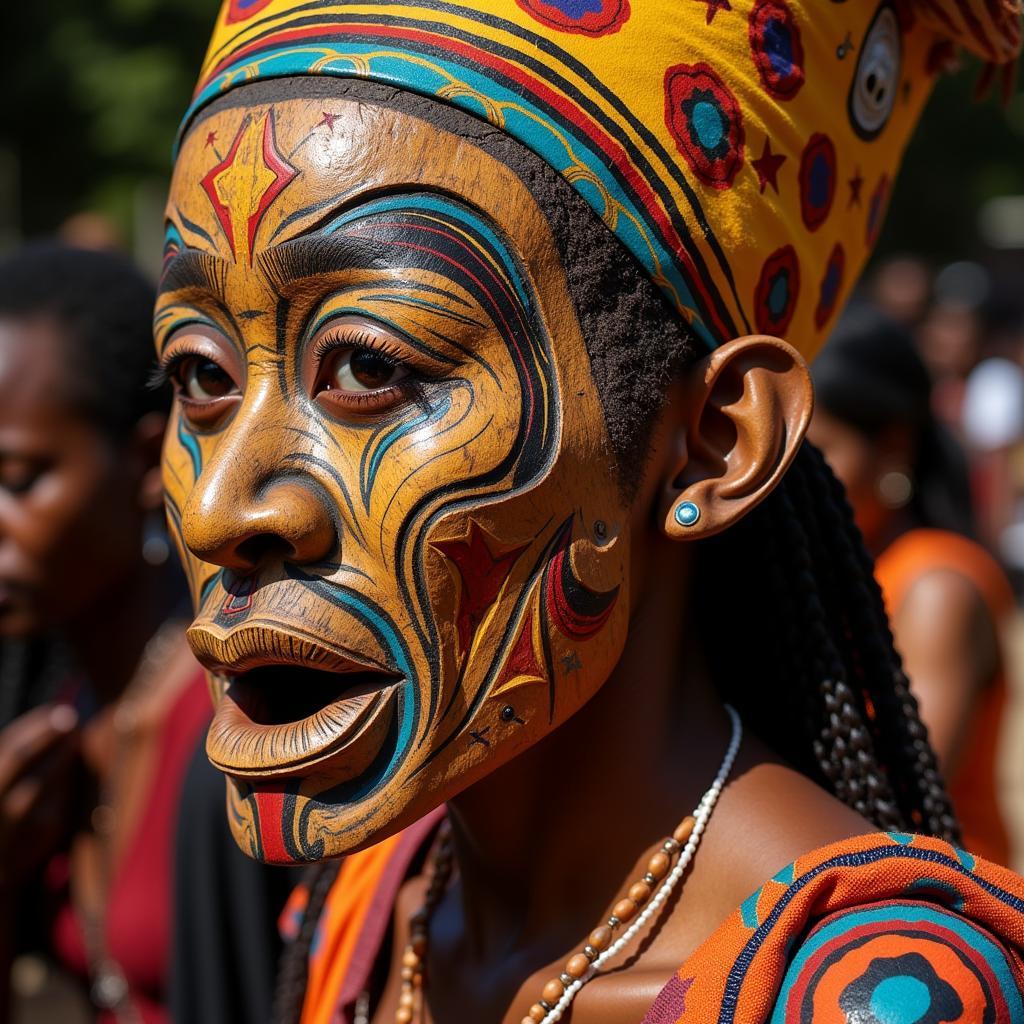The African Design Process: A Journey of Creativity and Innovation
The African Design Process is a vibrant and multifaceted journey that reflects the continent’s rich cultural heritage and innovative spirit. It’s not simply a technical exercise but a deeply rooted practice, intertwined with traditions, beliefs, and a profound understanding of the natural world. Understanding the unique aspects of African design allows us to appreciate the craftsmanship, artistry, and enduring legacy of this cultural expression.
Understanding the Essence of African Design
African design transcends mere aesthetics; it’s a philosophy that blends functionality, symbolism, and storytelling. It embodies a deep respect for materials and a commitment to sustainable practices. From intricate patterns on textiles to the architectural marvels of ancient cities, African design is characterized by:
- A symbiotic relationship with nature: African design often draws inspiration from the natural world, incorporating elements like animal motifs, geometric patterns inspired by plant life, and natural materials.
- Functionality and purpose: Design is not merely decorative but serves a specific purpose, whether for everyday use, ceremonies, or communication.
- Storytelling and symbolism: Patterns, colors, and shapes carry symbolic meanings, conveying messages and narratives through generations.
- Community and collective effort: Design often involves the collective participation of artisans and craftspeople, reflecting shared knowledge and traditions.
The Multi-layered Design Process
The African design process is not a linear path but a dynamic interplay of elements:
1. Inspiration and Observation
The first step is a keen observation of the surrounding environment. Artisans draw inspiration from nature, daily life, and the rich tapestry of cultural traditions. They observe the intricate details of a bird’s wing, the geometric patterns of a spider’s web, or the rhythm of traditional dances.
“We learn from the earth, from the sky, from the animals, and from the spirit of our ancestors.” – Aisha Mzizi, Maasai Weaver
2. Research and Collaboration
After gathering inspiration, artisans engage in research, often collaborating with elders, community members, and other craftspeople. This ensures the preservation of traditional techniques, knowledge sharing, and the incorporation of relevant cultural elements.
3. Material Selection and Transformation
The choice of materials is crucial in African design. Artisans utilize locally sourced materials such as wood, clay, leather, textiles, and precious metals, transforming them through techniques like weaving, carving, sculpting, and dyeing.
4. Design and Pattern Development
The design process involves meticulously crafting patterns, forms, and structures. This can include replicating observed natural elements or creating abstract designs that symbolize concepts or emotions.
“The beauty of African design lies in its ability to weave together functionality, symbolism, and a deep understanding of the human experience.” – Kofi Osei, Ghanaian Architect
5. Execution and Craftsmanship
With a clear design in mind, artisans meticulously execute their creations, applying their skills and knowledge to create objects of beauty and utility. This step often involves generations of passed-down techniques and a deep understanding of the materials’ properties.
6. Sharing and Legacy
The final stage involves sharing the creations with the community. This can be through festivals, markets, or the everyday use of objects. By transmitting their knowledge and artistry, artisans ensure the continuity of their cultural legacy.
The Enduring Impact of African Design
The African design process continues to inspire contemporary artists and designers globally. It has influenced fashion trends, furniture design, and architecture, fostering a global appreciation for the continent’s creativity and craftsmanship.
Frequently Asked Questions
1. What are some key elements of African design aesthetics?
African design often features bold colors, geometric patterns, natural motifs, and intricate details.
2. How does the African design process connect to sustainability?
The emphasis on using locally sourced materials, traditional techniques, and mindful consumption aligns with sustainable practices.
3. What is the significance of symbolism in African design?
Symbolism plays a crucial role in communicating cultural values, beliefs, and stories through patterns, colors, and forms.
4. How does the African design process evolve and adapt?
The process is dynamic, continuously evolving by incorporating new ideas, materials, and technological advancements while retaining its core principles.
5. What are some contemporary examples of how African design is influencing global trends?
African textiles, jewelry, and architectural styles are increasingly influencing global fashion and interior design trends.
This vibrant and multifaceted design process continues to captivate and inspire, serving as a testament to the creativity and innovation that defines the African spirit. It’s a journey that connects generations, bridges cultural divides, and celebrates the unique beauty of the African continent.



